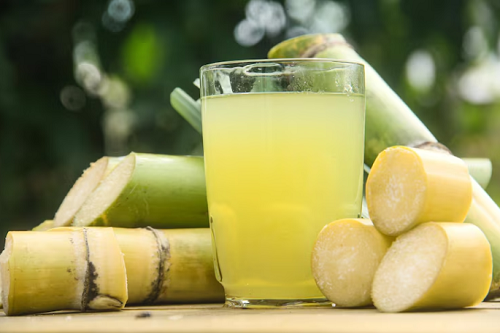Vinegar and Alcohol Production from Sugarcane Juice

Overview
This business involves processing sugarcane juice into vinegar and alcohol. The vinegar can be positioned as a health-oriented product for cooking and wellness, while the alcohol can cater to the hospitality industry and export markets. The production focuses on maximizing resource efficiency by diversifying product lines and targeting both local and international consumers.
Estimated Startup Costs
| Item | Cost (KSh) | Description |
| Sugarcane Raw Material | 100,000 | Procurement of sugarcane for initial production. |
| Processing Equipment | 400,000 | Includes fermenters, distillation units, filtration systems, and bottling lines. |
| Premises (Rent/Lease) | 50,000 | Rent or lease for a small production facility. |
| Licensing and Permits | 10,000 | Includes KEBS certification, alcohol manufacturing licenses, and health permits. |
| Packaging Materials | 30,000 | Bottles, labels, and cartons for vinegar and alcohol products. |
| Marketing and Branding | 20,000 | Development of labels, branding materials, and initial marketing campaigns. |
| Skilled Labor | 80,000 | Monthly salaries for distillers, quality control, and other staff. |
| Utilities (Electricity & Water) | 10,000 | Estimated utility costs for production. |
| Contingency Fund | 20,000 | For unforeseen expenses or operational challenges. |
| Total | 600,000 |
Market Analysis
1. Market Potential in Kenya and Export Markets
- Local Market:
The demand for vinegar is growing among health-conscious consumers for cooking and as a natural remedy. Additionally, spirits such as rum and cane alcohol cater to the hospitality sector, including hotels, restaurants, and bars. With Kenya’s rising tourism industry, the hospitality sector presents a significant market. - Export Market:
African countries and regions like the Middle East and Europe have growing demand for natural and locally sourced vinegar and premium spirits. Sugarcane-based spirits can cater to niches like craft distilleries and organic product consumers.
2. Where Is the Market?
- Local Market: Supermarkets, health stores, and hospitality businesses.
- Export Market: International distributors, specialty stores, and online marketplaces like Amazon and Alibaba.
3. Strategies to Access Each Market
Local Market Strategies:
- Direct Partnerships: Collaborate with supermarkets (e.g., Naivas, Carrefour) and health stores for shelf space.
- Hospitality Outreach: Partner with hotels and restaurants, offering sample products to showcase quality.
- Retail Branding: Position vinegar as a health product and spirits as premium offerings through clear branding and attractive packaging.
Export Market Strategies:
- Compliance and Certification: Secure KEBS and international certifications for food safety and export requirements (e.g., ISO 22000).
- Trade Shows: Participate in regional and global trade fairs focused on food and beverages.
- Digital Presence: Develop an e-commerce platform and list products on international marketplaces like Amazon, Alibaba, and Etsy.
- Partnering with Exporters: Collaborate with export agencies and logistics companies for efficient shipping.
Profit Model and Example
Profitability Example
- Vinegar:
- Production Cost per Bottle (500ml): 80 KSh (raw material, labor, and packaging).
- Selling Price per Bottle: 200 KSh.
- Profit per Bottle: 120 KSh.
- Monthly Production (2,000 bottles): 240,000 KSh profit.
- Alcohol:
- Production Cost per Bottle (750ml): 250 KSh (raw material, distillation, and packaging).
- Selling Price per Bottle: 600 KSh.
- Profit per Bottle: 350 KSh.
- Monthly Production (1,000 bottles): 350,000 KSh profit.
Total Monthly Profit: 590,000 KSh.
Case Study:
A small-scale sugarcane distillery in Kisumu began producing vinegar and rum with an initial investment of 1 million KSh. Within six months, the business expanded its local distribution and secured a contract to export premium rum to South Africa, achieving a monthly profit of 600,000 KSh.
Conclusion
By carefully managing production costs and leveraging Yakazi’s network for skilled labor and market connections, this business model has the potential to generate substantial profits in both local and international markets.

